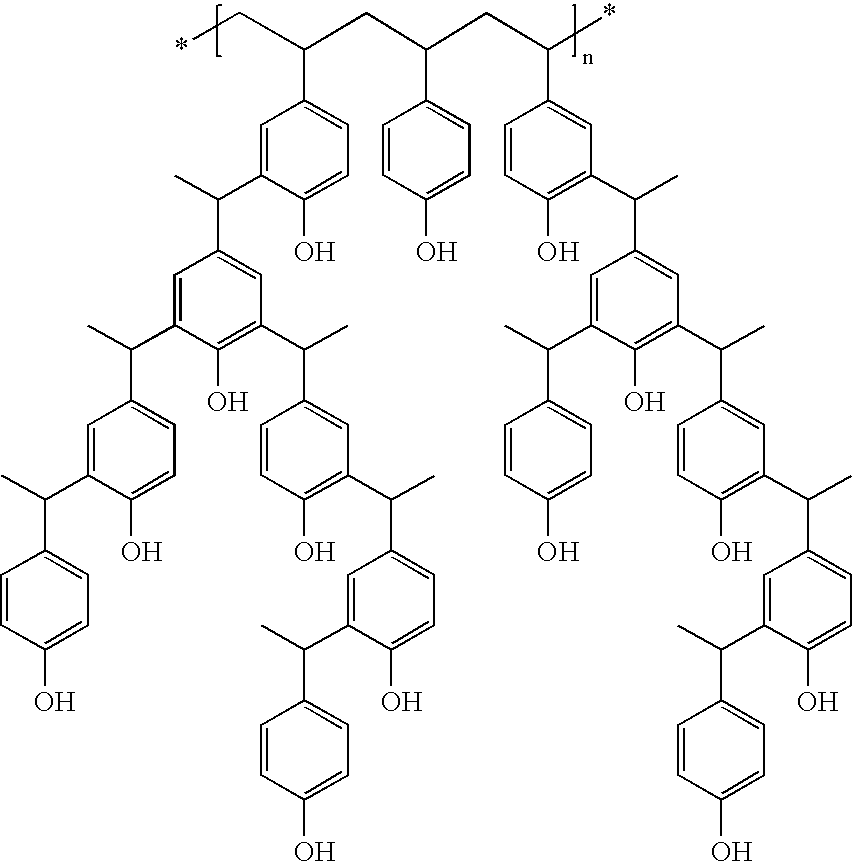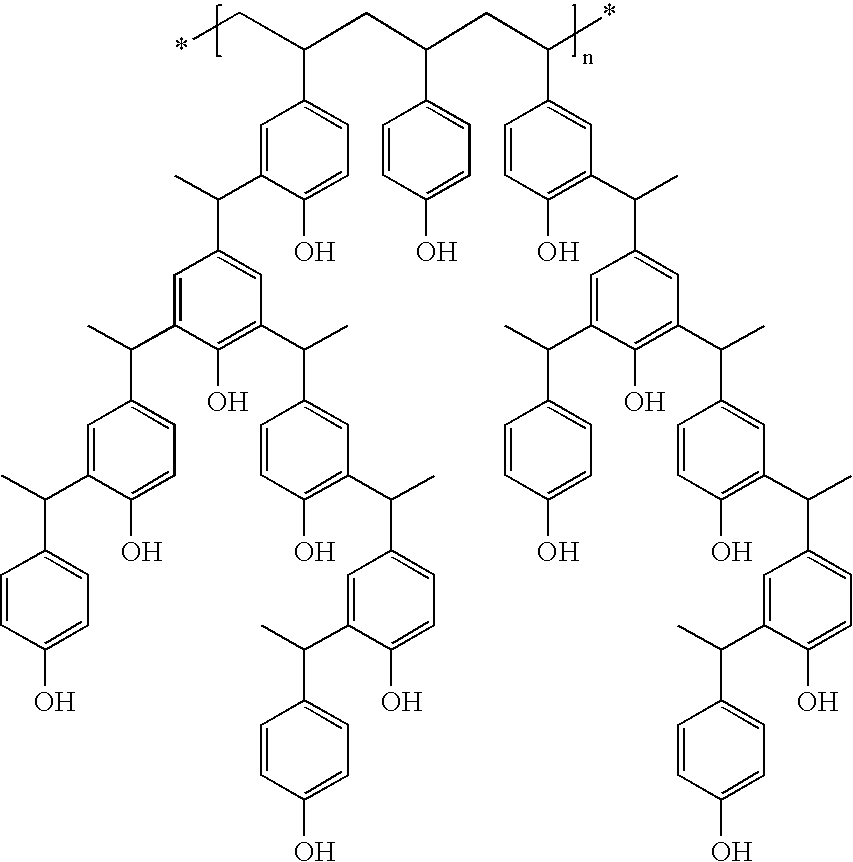Derivatized polyhydroxystyrenes with a novolak type structure and processes for preparing the same
a technology of derivatized polyhydroxystyrene and novolak type, which is applied in the direction of auxillary/base layers of photosensitive materials, instruments, photosensitive materials, etc., can solve the problem that known methods are not commercially feasible, and achieve the effect of low polydispersity
- Summary
- Abstract
- Description
- Claims
- Application Information
AI Technical Summary
Benefits of technology
Problems solved by technology
Method used
Image
Examples
example 1
4-Hydroxyphenylmethylcarbinol Methyl Ether (HPME) Synthesis
[0032] To 15 gms of methanolic solution containing 22.2% 4-hydroxyphenylmethylcarbinol (HPMC) was added 0.45 gms of Amberlyst A-15 acid ion exchange resin. This mixture was allowed to stand for 72 hours at room temperature. HPLC analysis indicates that the resulting solution contains only 0.21% HPMC (99% conversion) with the remainder being HPME. This material thus produced is suitable for use as a raw material in the preparation of the DPHS polymer.
Polymerization of 4-Hydroxyphenylmethylcarbinol Methyl Ether (HPME), Production of DPHS Polymer in Methanol Solution
[0033] To a 500 ml flask fitted with a nitrogen inlet, mixer, temperature indicator and controller, and reflux condenser was added 226 gms of methanol solution containing 30.4% HPME (68.7 gms HPME) raw material. Using solvent distillation 131 gms of methanol was removed rendering a solution containing 72.3% HPME in methanol.
[0034] The resulting solution was co...
example 2
Comparative
[0037] In a similar polymerization run using a raw material containing significant quantities of HPMC in the presence of HPME, a polymeric material completely unsatisfactory for commercial purposes was obtained. This undesirable material was dark blue in color and tacky upon vacuum drying. This material was also very difficult to filter and wash. This comparative example is similar to those examples 1-11 set forth in U.S. Pat. No. 5,554,719 and U.S. Pat. No. 5,565,544.
[0038] It is to be understood that the remarks above contain some theory as to the formation of DPHS with a novolak type structure; however, Applicant does not wish to be so limited.
PUM
| Property | Measurement | Unit |
|---|---|---|
| pressure | aaaaa | aaaaa |
| temperature | aaaaa | aaaaa |
| polydispersity | aaaaa | aaaaa |
Abstract
Description
Claims
Application Information
 Login to View More
Login to View More - R&D
- Intellectual Property
- Life Sciences
- Materials
- Tech Scout
- Unparalleled Data Quality
- Higher Quality Content
- 60% Fewer Hallucinations
Browse by: Latest US Patents, China's latest patents, Technical Efficacy Thesaurus, Application Domain, Technology Topic, Popular Technical Reports.
© 2025 PatSnap. All rights reserved.Legal|Privacy policy|Modern Slavery Act Transparency Statement|Sitemap|About US| Contact US: help@patsnap.com


